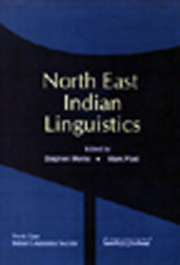Book contents
- Frontmatter
- Contents
- Introduction
- Foreword
- Phonology
- 1 Kurtöp Phonology in the Context of North East India
- 2 Working with Tones in North East India – The Tonal System of Numhpuk Singpho, Assam
- 3 Tonality and the Analysis of Sub-Minimal Words in Ao
- 4 Change with Continuity in the Boro-Garo Languages
- Lexicon
- Morphology, Syntax, and Semantics
- Language Description and Language Endangerment
1 - Kurtöp Phonology in the Context of North East India
from Phonology
Published online by Cambridge University Press: 26 October 2011
- Frontmatter
- Contents
- Introduction
- Foreword
- Phonology
- 1 Kurtöp Phonology in the Context of North East India
- 2 Working with Tones in North East India – The Tonal System of Numhpuk Singpho, Assam
- 3 Tonality and the Analysis of Sub-Minimal Words in Ao
- 4 Change with Continuity in the Boro-Garo Languages
- Lexicon
- Morphology, Syntax, and Semantics
- Language Description and Language Endangerment
Summary
Introduction
Kurtöp is a Tibeto-Burman language of Northeastern Bhutan which has remained only marginally described in the literature (e.g. Michailovksy and Mazaudon 1994; van Driem 1995, 2001). This paper presents a phonemic analysis of Kurtöp and situates the analysis within the context of its neighbors in North East India. By offering a phonological analysis of Kurtöp, this paper contributes to documentary endeavors in Tibeto-Burman linguistics. By situating the phonological description in the context of North East India, this paper further begins the dialogue necessary to ascertain to what extent the languages of North East India have been influenced by each other, or to what extent the area can be considered a linguistic area, and therefore how such influence may impact the historical classification of these languages.
As descriptions of previously unstudied languages become available, it is fruitful to maintain theoretical concerns with the new descriptions in mind. Often, an immediate concern for the field of historical linguistics is the historical placement of a newly described language. As many scholars have noted (e.g. Masica 1976, Campbell 2001 [1998], Enfield 2005), areal linguistics is crucial to a thorough understanding of historical linguistics, and therefore the placement of a particular language within its family. That is, in order to confidently situate languages within sub-families, and reconstruct proto-languages, it is imperative to discern borrowings and areal influences from innovations. As Campbell (2001 [1998]:299) states ‘in order to reconstruct proto-languages accurately or to determine family relationships, it is necessary to distinguish material which is borrowed from that which is inherited from a common ancestor.’
Examining a certain geographic area in terms of a ‘linguistic area’ is a practical requisite to discerning borrowings from areal influence.
- Type
- Chapter
- Information
- North East Indian Linguistics , pp. 3 - 25Publisher: Foundation BooksPrint publication year: 2008
- 3
- Cited by



